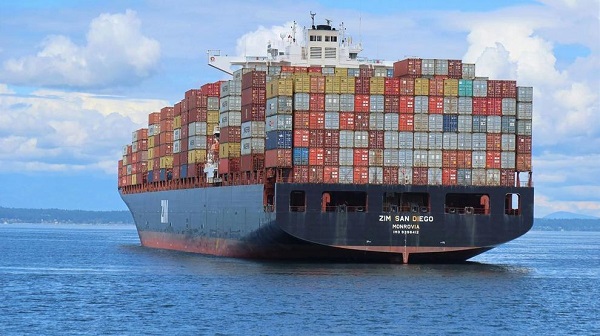Energy
Canada Cannot Become an Energy Superpower With its Regulatory Impediments

From Energy Now
By Yogi Schulz
Prime Minister Carney wants Canada to become an energy superpower. It’s a worthy goal because Canada has rich, undeveloped energy resources. Many Canadians happily endorse his goal because it achieves these benefits:
- Economic growth and prosperity for Canadians.
- Reduce the adverse consequences of American tariffs.
- Additional tax revenue that reduces the mountain of Canadian public debt.
- Improved energy security and reduced cost for Canadians in Eastern Canada.
- Improved energy security for Canada’s international energy customers.
- Alternative energy supply options for NATO allies to replace Russian energy.
- Greenhouse gas (GHG) reductions that occur when Canadian high ESG energy replaces other energy sources.
However, Canada can achieve these benefits only by overcoming multiple regulatory impediments, including those described below.
Interprovincial trade barriers
Interprovincial trade barriers impose costs on all industries. Consumers, not companies, bear these costs. A Macdonald-Laurier Institute study estimated that eliminating interprovincial trade barriers could boost Canada’s economy by between 4.4 and 7.9 percent over the long term or between $110 and $200 billion per year. Examples of interprovincial trade barriers that affect the oil and gas industry include:
- Pools that cross provincial boundaries: Producers must build two higher-cost processing facilities, one on each side of the border.
- Gathering systems that cross provincial boundaries: Producers must obtain a federal pipeline permit, which requires a multi-year approval process, to build a pipeline that crosses a provincial border.
- Many minor technical differences: Provinces set their own rules, standards, and certifications for topics such as vehicle weight, length, and safety protocols. These differences increase producer operating costs.
- Professional licensing: Individuals, such as those in skilled trades, must undergo a lengthy, costly process to obtain a license to work in another province, even if they are already certified elsewhere.
- Administrative hurdles: Producers operating in multiple provinces face a complex web of permit, license, and reporting requirements that vary from one province to the next.
- Geographical barriers: The dimensional limitations of tunnels in the Rocky Mountains create a shipping barrier for producers, adding costs when importing large facility components.
For Canada to achieve energy superpower status, reducing interprovincial trade barriers will be necessary to enhance its competitiveness. The Canadian Free Trade Agreement (CFTA) and the Free Trade and Labour Mobility in Canada Act are encouraging federal initiatives to reduce interprovincial trade barriers. The outrageous Trump tariffs have also provided some provinces with a new incentive to lower or eliminate some of their barriers. However, the “mutual recognition” approach may be more symbolic than substantive.
Provincial regulatory incompatibilities
Oil and natural gas producers face slightly different regulations in every province and territory. These incompatibilities incur avoidable operational costs and erode Canada’s competitiveness in the global investment capital market.
Energy industry regulators operate in every province and territory where oil and natural gas are produced. These regulators have independently produced large volumes of regulations that are similar but far from identical. Most of these regulations are derived from those first written in Alberta and various US jurisdictions. Alberta created the first Canadian energy industry regulator because most of the resources are located within its borders.
So far, energy industry regulators have only harmonized the following:
- Canadian Standards Association (CSA) Z662 Oil and Gas Pipeline Systems. British Columbia, Alberta and Saskatchewan have adopted this standard.
- Directive 017 – Measurement Requirements for Oil and Gas Operations. Alberta and Saskatchewan have adopted this directive.
Unfortunately, only these two documents, among many dozens, have been harmonized. Parochial thinking appears to be a significant impediment to more harmonization. For example:
- Some Canadian regulators participate in the Western Regulators Forum (WRF). However, the WRF has yet to harmonize any regulations.
- Over two decades ago, the Alberta Department of Energy and Minerals sponsored the development of Petrinex with a vision of energy industry-government data management cooperation across multiple provinces. However, the vision has not been realized because the provinces built individual, incompatible systems to protect their turf.
“Producers write more government submissions than technical papers – ten times more. Submissions consume significant effort from technical professionals and include specific oil and gas technical information such as fracking schemes, SAGD operations or facility modifications,” says Granger Low, of Regaware Systems Ltd. “When producers can easily search previous submissions using the artificial intelligence of AppIntel AI, they take advantage of Alberta’s uniquely remarkable oil and gas technical advances, and avoid the delays related to over-regulation and resubmission.”
For Canada to achieve energy superpower status, harmonizing more provincial and territorial oil and natural gas industry regulations will be required to improve its competitiveness.
Provincial regulatory issues
Dealing with regulations is a cost that all oil and natural gas producers bear. Regulations are desirable and necessary to a point. Issues where the energy industry regulators could improve performance include:
- Reducing and simplifying the enormous number of directives. The issue is that the directives contain extensive related best practices that, while valuable, become indistinguishable from regulatory requirements.
- Reducing and simplifying the permit application processes for wells, facilities and pipelines. How the current complexity helps regulators fulfill their mandate is unclear.
- Simplifying reporting and compliance assessment would reduce administrative costs for both producers and regulators.
- Eliminating the APMC in Alberta would reduce producers’ administrative costs and increase Crown royalty revenue. This article describes the details: It’s Time to Retire the APMC – The APMC Mandate Has Expired, Its Cost is Now Avoidable.
- Failing to address data quality issues for wells, digital well logs, and cores undermines one of Alberta’s competitive advantages.
For Canada to achieve energy superpower status, reducing the cost of regulatory applications and compliance is a component of improving its competitiveness.
Taxation disparities
Oil and natural gas producers encounter taxation disparities across provinces. The following disparities affect geographic investment decisions:
- Crown Royalty and Freehold Production Tax calculations and related settlement processes vary considerably by province and type of production.
- Corporate income tax rates and reporting vary by province.
- The combined GST and PST/HST rate varies from 5% in Alberta to 15% in some other provinces.
- Oil and natural gas facility property tax rates and reporting vary by province.
Simplifying these taxation disparities would reduce administrative costs for both producers and the Crown. The combination of taxes and fees that producers pay in Canada is enough to cause some to invest in more profitable jurisdictions.
For Canada to achieve energy superpower status, reducing and harmonizing taxation disparities is a prerequisite to encourage more investment in production.
Additional costs that every producer accepts
Overcoming impediments is particularly important to Canadian competitiveness because the Canadian oil and gas industry incurs higher operating costs than the industry does in most other jurisdictions. The higher cost categories include:
- Wages and benefits.
- Health, safety and environmental standards.
- Abandonment standards.
- Disclosure of intellectual property in publicly-accessible permit application documents.
- Lower staff productivity and added heating costs due to lower winter temperatures.
No one is suggesting lowering these Canadian standards and expectations. However, the associated costs increase the urgency of reducing other regulatory impediments to maintain Canada’s competitiveness.
Conclusions
Canada has the resources to become an energy superpower and realize the immense economic, strategic, and environmental benefits that are available. Policymakers can contribute by harmonizing regulations and removing interprovincial trade barriers to ensure investment in Canadian energy is competitive on world financial markets.
Yogi Schulz has over 40 years of experience in information technology in various industries. He writes for Engineering.com, EnergyNow.ca, EnergyNow.com and other trade publications. Yogi works extensively in the petroleum industry to select and implement financial, production revenue accounting, land & contracts, and geotechnical systems. He manages projects that arise from changes in business requirements, the need to leverage technology opportunities, and mergers. His specialties include IT strategy, web strategy, and systems project management.
Alberta
Alberta’s number of inactive wells trending downward

Aspenleaf Energy vice-president of wells Ron Weber at a clean-up site near Edmonton.
From the Canadian Energy Centre
Aspenleaf Energy brings new life to historic Alberta oil field while cleaning up the past
In Alberta’s oil patch, some companies are going beyond their obligations to clean up inactive wells.
Aspenleaf Energy operates in the historic Leduc oil field, where drilling and production peaked in the 1950s.
In the last seven years, the privately-held company has spent more than $40 million on abandonment and reclamation, which it reports is significantly more than the minimum required by the Alberta Energy Regulator (AER).
CEO Bryan Gould sees reclaiming the legacy assets as like paying down a debt.
“To me, it’s not a giant bill for us to pay to accelerate the closure and it builds our reputation with the community, which then paves the way for investment and community support for the things we need to do,” he said.
“It just makes business sense to us.”
Aspenleaf, which says it has decommissioned two-thirds of its inactive wells in the Leduc area, isn’t alone in going beyond the requirements.
Producers in Alberta exceeded the AER’s minimum closure spend in both years of available data since the program was introduced in 2022.
That year, the industry-wide closure spend requirement was set at $422 million, but producers spent more than $696 million, according to the AER.
In 2023, companies spent nearly $770 million against a requirement of $700 million.
Alberta’s number of inactive wells is trending downward. The AER’s most recent report shows about 76,000 inactive wells in the province, down from roughly 92,000 in 2021.
In the Leduc field, new development techniques will make future cleanup easier and less costly, Gould said.
That’s because horizontal drilling allows several wells, each up to seven kilometres long, to originate from the same surface site.
“Historically, Leduc would have been developed with many, many sites with single vertical wells,” Gould said.
“This is why the remediation going back is so cumbersome. If you looked at it today, all that would have been centralized in one pad.
“Going forward, the environmental footprint is dramatically reduced compared to what it was.”

During and immediately after a well abandonment for Aspenleaf Energy near Edmonton. Photos for the Canadian Energy Centre
Gould said horizontal drilling and hydraulic fracturing give the field better economics, extending the life of a mature asset.
“We can drill more wells, we can recover more oil and we can pay higher royalties and higher taxes to the province,” he said.
Aspenleaf has also drilled about 3,700 test holes to assess how much soil needs cleanup. The company plans a pilot project to demonstrate a method that would reduce the amount of digging and landfilling of old underground materials while ensuring the land is productive and viable for use.

Crew at work on a well abandonment for Aspenleaf Energy near Edmonton. Photo for the Canadian Energy Centre
“We did a lot of sampling, and for the most part what we can show is what was buried in the ground by previous operators historically has not moved anywhere over 70 years and has had no impact to waterways and topography with lush forestry and productive agriculture thriving directly above and adjacent to those sampled areas,” he said.
At current rates of about 15,000 barrels per day, Aspenleaf sees a long runway of future production for the next decade or longer.
Revitalizing the historic field while cleaning up legacy assets is key to the company’s strategy.
“We believe we can extract more of the resource, which belongs to the people of Alberta,” Gould said.
“We make money for our investors, and the people of the province are much further ahead.”
Business
Carney budget doubles down on Trudeau-era policies

From the Fraser Institute
By Kenneth P. Green and Elmira Aliakbari
The Carney government tabled its first budget, which includes major new spending initiatives to promote a so-called “green economy,” and maintains greenhouse gas (GHG)-emission extinction as a central operating principle of Canadian governance.
The budget leaves untouched most of the legislative dampers on Canada’s fossil fuel sector (oil, gas, coal) of the last 10 years, while pouring still more money into theoretically “green” projects such as additional (and speculative new types) of nuclear power, electrical transmission to service “green” energy production, continued tax credits for alternative fuels such as hydrogen, and more. Adding insult to injury, the budget discusses “enhancing” (read: likely increasing) the carbon tax on industrial emitters across Canada, and tightening controls over provinces to ensure they meet new federal tax targets.
Over the past decade, Ottawa introduced numerous regulations to restrict oil and gas development and again accelerate the growth of the green sector. Key initiatives include Ottawa’s arbitrary cap on GHG emissions for the oil and gas sector, which will restrict production; stricter regulations for methane emissions in the oil and gas industry, which will also likely restrict production; “clean electricity” regulations that aim to decarbonize Canada’s electricity generation; Bill C-69 (which introduced subjective ill-defined criteria into the evaluation of energy projects); and Bill C-48, known as the oil tanker ban on the west coast, which limits Canadian exports to Asian and other non-U.S. markets.
At the same time, governments launched a wide range of spending initiatives, tax credits and regulations to promote the green economy, which basically includes industries and technologies that aim to reduce pollution and use cleaner energy sources. Between 2014/15 and 2024/25, federal spending on green initiatives (such as subsidizing renewable power, providing incentives for electric vehicles and charging infrastructure, funding for building retrofits, and support for alternative fuels such as hydrogen, etc.) went from $0.6 billion to $23 billion—a 38-fold increase. Altogether, since 2014, Ottawa and provincial governments in the country’s four largest provinces (Ontario, British Columbia, Quebec and Alberta) have spent and foregone revenues of at least $158 billion to promote the green sector.
Yet, despite the government’s massive spending and heavy regulation to constrain the fossil fuel industry and promote the green sector, the outcomes have been extremely disappointing. In 2014, the green sector accounted for 3.1 per cent of Canada’s economic output, and by 2023, that share had only slightly grown to 3.6 per cent. Put simply, despite massive spending, the sector’s contribution to Canada’s economy has barely changed. In addition, between 2014 and 2023, despite billions in government spending to promote the green sector, only 68,000 new jobs were added in this sector, many of them in already established fields such as waste management and hydroelectric power. The sector’s contribution to national employment remains small, representing only 2 per cent of total jobs in the country.
Not surprisingly, this combination of massive government spending and heavy-handed regulation have contributed to Canada’s economic stagnation in recent years. As documented by our colleagues, Canadian living standards—measured by per-person GDP—were lower in the second quarter of 2025 than six years earlier, suggesting we are poorer today than we were six years ago.
But for Prime Minister Carney, apparently, past failures do not temper future plans, as the budget either reaffirms or expands upon the failed plans of the past decade. No lessons appear to have even been considered, much less learned from past failures.
There had been some hope that Carney’s first budget would include some reflection of how badly the natural resource and energy policies of the Trudeau government have hurt Canada’s economy.
But other than some language obfuscation—“investment” vs. “spending,” “competitiveness” of GHG controls (not economy), and the “green” energy economy vs. the “conventional” energy economy—this is a Trudeau-continuance business-as-usual agenda on steroids. Yes, they will allow some slight deceptive rollbacks to proceed (such as rolling the consumer carbon tax into the industrial carbon tax rather than eliminating it), and may allow still more carbon taxes to render at least one onerous Trudeau-era regulation (the oil and gas cap) to be rendered moot, but that’s stunningly weak tea on policy reform.
The first Carney budget could and likely will, if passed, continue the economic stagnation plaguing Canada. That does not bode well for the future prosperity of Canadians.
-

 espionage1 day ago
espionage1 day agoU.S. Charges Three More Chinese Scholars in Wuhan Bio-Smuggling Case, Citing Pattern of Foreign Exploitation in American Research Labs
-

 Business1 day ago
Business1 day agoU.S. Supreme Court frosty on Trump’s tariff power as world watches
-

 Justice2 days ago
Justice2 days agoCarney government lets Supreme Court decision stand despite outrage over child porn ruling
-

 Business19 hours ago
Business19 hours agoHere’s what pundits and analysts get wrong about the Carney government’s first budget
-

 Business12 hours ago
Business12 hours agoCarney’s Deficit Numbers Deserve Scrutiny After Trudeau’s Forecasting Failures
-

 Business2 days ago
Business2 days agoThe Liberal budget is a massive FAILURE: Former Liberal Cabinet Member Dan McTeague
-

 International12 hours ago
International12 hours agoKazakhstan joins Abraham Accords, Trump says more nations lining up for peace
-

 Daily Caller1 day ago
Daily Caller1 day agoUN Chief Rages Against Dying Of Climate Alarm Light





